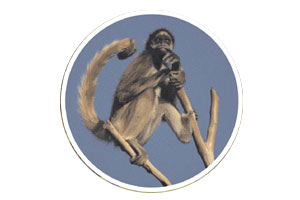In every ecosystem, be it in greater or lesser amount, we find diverse chemical elements. This occurs because all living organisms are made up by substances like carbon, oxygen or nitrogen among many others, in different degrees. It is also possible to find real chemical deposits in non-living nature, as in the case of the atmosphere, important reservoir of carbon dioxide and oxygen, or also, on the ground and rocks, where it is common to find minerals, nitrates and phosphates.
The main common characteristic of all of these elements is that they are in permanent transformation and exchange among all of the organisms that make up an ecosystem.
Nature surprises us with a series of cycles in which elements pass from one medium to another through living being and the environment that surrounds them.
Carbon cycle
All organic molecules are made up by chains of carbon linked amongst themselves. Therein lies the importance of this vital element and its role in the ecosystemic balance.
Plants absorb it from the air through their leaves and process it within until they transform it into a vegetable substance during photosynthesis. A small part is returned to the atmosphere through vegetable respiration, while the remaining portion reaches animals that feed on plants. From there it continues its journey to carnivorous animals, that hunt herbivores. This way, carbon is a part, in both cases, of the matter that makes up these living beings (muscles, bones, etc.).
During their lives, both herbivores and carnivores also return carbon dioxide to the atmosphere through respiration.
Once dead, vegetables as well as animals are reduced to a minimum amount of organic matter thanks to the action of decomposing organisms (bacteria, fungi, protozoa, among others) which also release carbon dioxide into the air and the roots of plants, which capture and process it once again.
Nitrogen cycle
Key part of important processes, like the synthesis of proteins and nucleic acids, nitrogen is an element whose availability is limited in all ecosystems. Its fundamental reserve is the atmosphere, where it is found as N2.
Although it is a compound used by all living beings, it cannot be captured directly in its gaseous form. Due to this, it needs to change it composition and turn into nitrates (NO3) and ammonia (NH3), thanks to the action of nitrifying bacteria. They are cane-shaped, their size reaches 0.4 to 0.6 microns and in order to perform their efficient task, they need the presence of oxygen.
These small microorganisms allow the nitrogen to incorporate itself to both vegetable and animal cells, because the nitrogen set to the ground passes on to plants and the different kinds of animals through feeding. The return is produced thanks to the deposit of organic waste and excrement on the surface, which plants also reuse as fertilizer.
Oxygen cycle
The fundamental reserve of oxygen is in the atmosphere. The cycle of this vital element is strongly linked to carbon’s, because in both animal and vegetable (photosynthesis) respiration it is constantly passed on between the atmosphere and living beings, along with this element.
There are organisms that consume it to obtain energy (animals) and others, despite wasting a certain amount, are producers (plants).
The oxygen cycle also implies another important process that takes places when some O2 molecules break up into free atoms and react with other O2 molecules, forming ozone (O3). Ozone is a substance present in our atmosphere that protects Earth from a very harmful type of ultraviolet radiation. Every time it absorbs these dangerous rays, it returns to its natural state and turns into O2.
Sulfur and phosphorus cycles
Sulfur and phosphorus are elements that, although are found in small amounts in nature, carry out important functions at an organic level. The first one is one of the most outstanding building blocks of amino acids, while phosphorus actively participates in the energetic relationships that take place within organisms, it is part of the phospholipids of the cellular membranes and makes up the raw material of living beings’ bones and teeth.
Sulfur is captured in substrate form from roots (on land surfaces) and through the cellular wall (in aquatic environments) by plants (land and aquatic), which go on to be food for animals. After their death, sulfur returns to the ground inducing a new cycle. As for phosphorus, it is necessary to mention that these elements main reserve is the Earth’s crust. It is released through the weathering process of rocks or the expulsion of volcanic ash, and can be used by plants. It is easily carried by waters and reaches the sea, where an important portion sediments the bottom and forms rocks. They will all take million of years in returning to emerge and gradually release phosphate salts.








 Muere Evita
Muere Evita